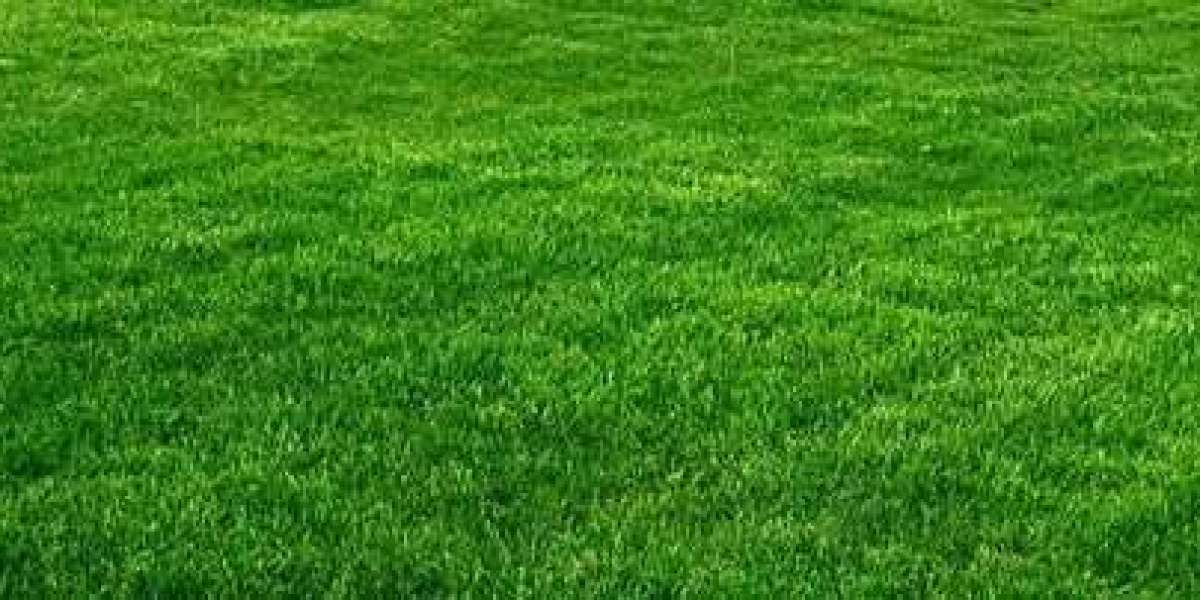A lush, green lawn is the dream of many homeowners. It's not just about aesthetics; a well-maintained lawn can boost your home's curb appeal, improve your mood, and provide a space for outdoor activities. However, maintaining a lawn that stays green and vibrant throughout the summer can be quite the challenge. From proper watering techniques to effective fertilization, several factors play a crucial role in keeping your grass healthy. If you're looking to transform your outdoor space into a lush green lawn, it’s essential to understand the necessary steps and methods for optimal results.
Importance of Soil Health
The foundation of any healthy lawn starts with the soil. Without rich, well-balanced soil, your lawn will struggle to grow and stay green. Soil health affects everything from water retention to nutrient absorption, so understanding your soil's needs is essential. Conducting a soil test is the first step. A soil test provides insight into the pH level and nutrient content, allowing you to adjust it accordingly.
Improving soil health can involve adding organic matter, such as compost or mulch, to improve texture and water retention. Aerating the soil can also allow for better water and nutrient absorption by breaking up compacted soil, ensuring grass roots have the space and resources they need to thrive.
Proper Watering Techniques for a Lush Lawn
Watering is a critical element in lawn care, but it must be done correctly to maintain a lush green appearance. Many homeowners tend to overwater, leading to issues such as shallow root growth or even fungal infections. On the other hand, insufficient watering can cause your grass to become stressed and turn brown, especially during the hot summer months.
For the best results, water deeply but less frequently. This encourages deep root growth, which is essential for your grass to stay resilient during periods of drought. The best time to water your lawn is in the early morning, as the cooler temperatures allow for maximum absorption without losing too much water to evaporation. Proper irrigation systems can also make a significant difference in how efficiently you water your lawn, ensuring even distribution and preventing overwatering.
The Role of Fertilization in Grass Growth
Fertilization is essential for providing your grass with the nutrients it needs to grow thick, green, and healthy. Different types of grass require different nutrients, and it’s important to choose the right fertilizer for your lawn type. Nitrogen is the key nutrient responsible for green, leafy growth, but your lawn also needs phosphorus for strong root development and potassium for overall plant health.
A balanced fertilizer can help provide all three of these nutrients in the correct proportions. Applying fertilizer at the right time is crucial. For most grass types, spring and early summer are ideal times for fertilization, as this is when grass is growing most actively. Be careful not to over-fertilize, as this can burn your grass and create brown patches, which is the opposite of a lush green lawn.
Mowing Practices for Healthy Grass
How you mow your lawn plays a significant role in its overall health and appearance. Many people make the mistake of cutting their grass too short, believing it will reduce the frequency of mowing. However, cutting the grass too low can stress the plant, making it more susceptible to disease, weeds, and drought. For a healthy lawn, it’s best to keep your grass at a higher height. This allows the grass blades to shade the soil, keeping it cooler and preventing water from evaporating too quickly.
Always ensure your mower blades are sharp, as dull blades can tear the grass, causing it to become brown and frayed. The general rule of thumb is to never cut more than one-third of the grass blade at a time. Frequent mowing at a proper height will encourage thicker, more vigorous growth, contributing to that lush green look you desire.
Combatting Weeds and Pests Naturally
Weeds and pests are some of the biggest challenges when trying to maintain a lush green lawn. Weeds, in particular, compete with your grass for water, nutrients, and sunlight, often resulting in thin, patchy areas. To prevent weeds from taking over, it’s important to promote a dense lawn through proper mowing, watering, and fertilization.
When it comes to pests, insects like grubs or chinch bugs can cause significant damage to your lawn. If you notice brown patches that are getting worse despite proper care, pests may be the culprit. Natural solutions, such as introducing beneficial nematodes or applying organic pest control treatments, can help manage these issues without harming the environment.
Aeration and Dethatching for Optimal Growth
Compacted soil and thatch build-up can choke the grass roots, preventing them from accessing the air, water, and nutrients they need. Aeration involves removing small plugs of soil from your lawn to allow air and water to reach deeper into the soil. It also encourages root growth, making your grass more resilient.
Dethatching is another process that involves removing the layer of dead grass and organic material that can accumulate on the soil surface. This layer, known as thatch, can block water and nutrients from penetrating the soil if it becomes too thick. By dethatching your lawn, you’re giving it room to breathe and absorb the resources it needs to grow green and healthy.
Organic Lawn Care vs. Chemical Solutions
There is an ongoing debate between organic and chemical lawn care methods. While chemical fertilizers and pesticides can yield quick results, they often come with environmental risks and can lead to long-term soil degradation. Organic lawn care, on the other hand, focuses on building healthy soil and using natural pest control methods.
Organic fertilizers, such as compost or manure, can improve soil health without the harsh chemicals found in synthetic products. Additionally, organic methods encourage biodiversity, which can naturally keep pests in check and promote a more resilient lawn. If you’re aiming for a sustainable and environmentally friendly approach to lawn care, going organic may be the best option for you.
Seasonal Lawn Care Tips for a Lush Green Lawn
Caring for your lawn requires attention throughout the year, but each season brings its own set of challenges and needs. In spring, focus on fertilization, aeration, and overseeding to repair any damage from winter and prepare for the growing season. During the hot summer months, it’s all about keeping your lawn hydrated and protecting it from the heat. Fall is an excellent time to fertilize and aerate your lawn, allowing it to recover from summer stress and prepare for winter dormancy.
Winter may seem like a dormant period for your lawn, but there are still steps you can take to ensure its health. Avoid walking on frosted grass to prevent damage, and consider applying a layer of mulch to protect the soil from freezing temperatures. Proper seasonal care will ensure your lawn stays green and healthy year-round.
Lawn Care Mistakes to Avoid
Even with the best intentions, it’s easy to make mistakes when caring for your lawn. Overwatering, for example, is one of the most common errors, as it can lead to shallow root growth and an increased risk of disease. Another mistake is fertilizing too frequently or using the wrong type of fertilizer for your grass. This can cause nutrient imbalances that result in poor growth or even damage to your lawn.
In addition to watering and fertilization mistakes, neglecting to sharpen your mower blades or cutting the grass too short can lead to a weak, patchy lawn. Understanding these common pitfalls and taking steps to avoid them will help you maintain a healthy, green lawn.
How to Prepare for a Lush Lawn Next Season
Lawn care is a long-term commitment, and what you do now will affect how your lawn looks next season. By staying proactive and preparing your lawn ahead of time, you can set yourself up for success. Aerating, fertilizing, and overseeding in the fall can provide your grass with the resources it needs to grow thick and green in the spring. Regular maintenance, such as mowing and watering, will also play a significant role in ensuring your lawn stays healthy over time.
Maintaining a lush green lawn requires attention to detail, consistency, and a good understanding of your lawn's unique needs. From proper watering techniques to smart fertilization and pest control, every step you take will contribute to the health and beauty of your lawn. For homeowners looking for a more comprehensive guide to achieving their dream yard, resources like Lush Green Lawn provide valuable insights and expert tips.
Achieving a lawn that’s both beautiful and functional is entirely possible with the right knowledge and commitment. While it takes effort, the rewards of having a vibrant outdoor space are well worth it.








